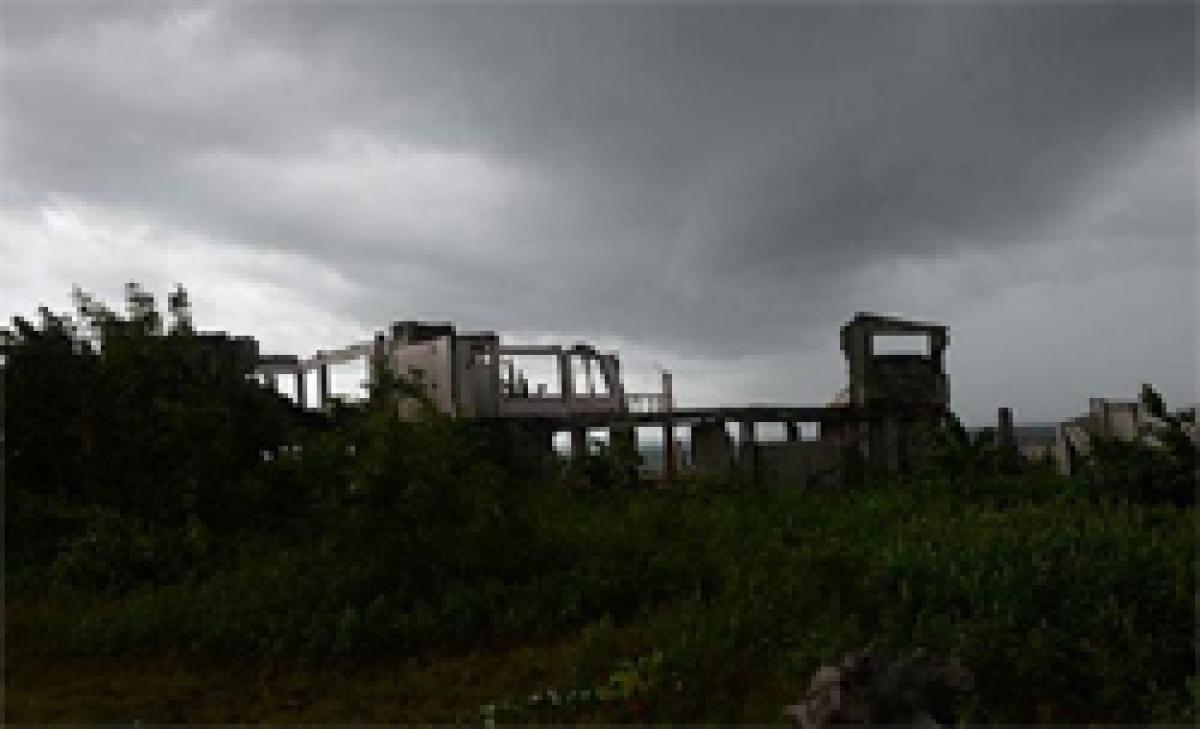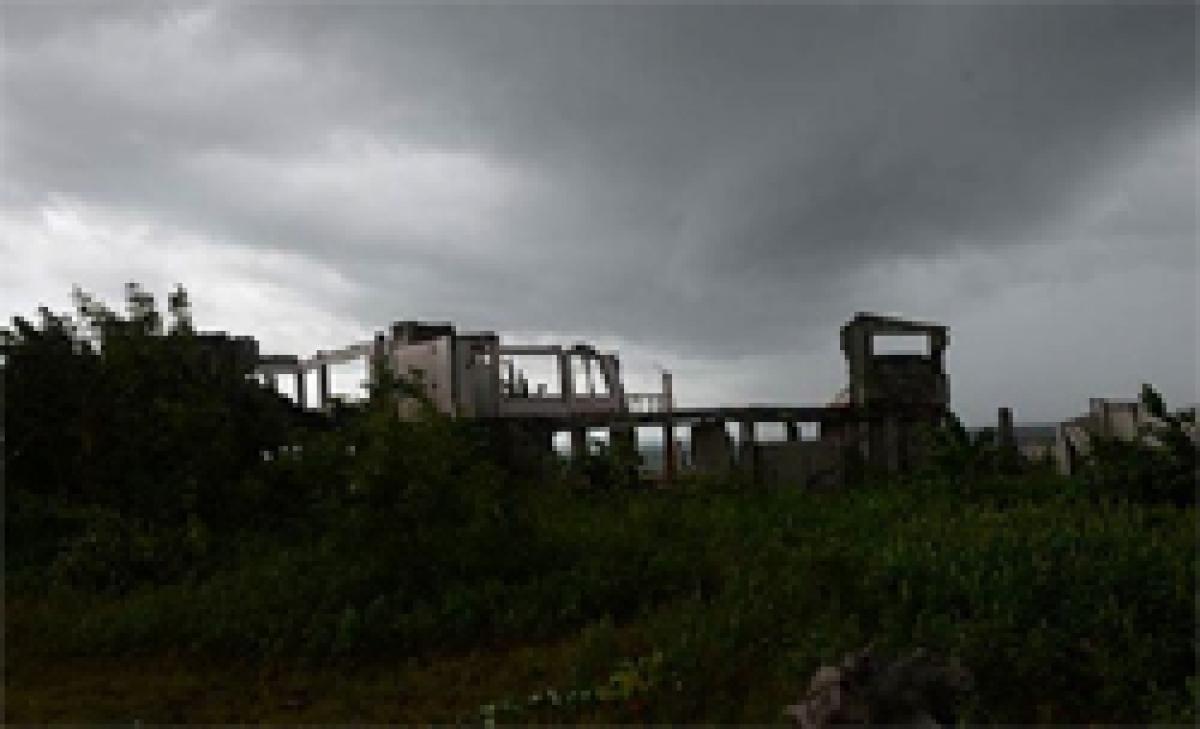Live
- Annual Art Festival 2024 by SICA
- Celebrating resilience and strength through literature
- No Telugu Ganga water supply in some wards today
- Press Release - Understanding Men’s Mental Health Challenges FINAL
- International Men’s Day: Make ‘Him’ Feel Truly Special
- Chandrasekhar takes charge as Srisailam temple EO
- Border-Gavaskar Trophy 2024-25: Devdutt Padikkal, Sai Sudarshan back-ups for Indian team for Test matches
- Nayanthara Opens Up About Her Turbulent Past in Netflix Documentary Beyond The Fairytale
- World Toilet Day 2024: Theme, History, and The Importance of Sanitation
- Exercise for over 2 hr every week may boost heart health
Just In

x
Highlights
Two years after a super typhoon devastated the Philippines and sounded a global alarm on climate change, a massive rebuilding programme has had big successes but at least one million survivors are still without safe homes.
 Two years after a super typhoon devastated the Philippines and sounded a global alarm on climate change, a massive rebuilding programme has had big successes but at least one million survivors are still without safe homes.
Two years after a super typhoon devastated the Philippines and sounded a global alarm on climate change, a massive rebuilding programme has had big successes but at least one million survivors are still without safe homes.
In Tacloban, a major coastal city that was nearly completely destroyed and where thousands died, restaurants and shops are bustling again showcasing the best of a remarkable resurrection for many communities.
But on the city's outskirts and elsewhere, many people endure deep poverty as they live in flimsy new homes that make them extremely vulnerable to future storms that will inevitably whip in off the Pacific Ocean.
More than 7,350 people were killed or left missing after Super Typhoon Haiyan struck the Philippines on November 8, 2013, with the strongest winds ever recorded on land.
Tsunami-like storm surges higher than trees exacerbated the disaster, demolishing communities on central Philippine islands that were already among the nation's poorest.
"I cry almost every night. Jesus, Mary and Joseph, how are we going to survive," Esliba Bascal, 59, who lost her son and home in the disaster and now lives in a makeshift dwelling just outside Tacloban, said last week.
Like many others, Bascal's hopes for a new government-provided house in a safe place have not come true.
She lives with her husband, widowed daughter-in-law and six grandchildren in a brick-and-tin structure built on the same site as their previous home that was wiped out by the storm surges.
"We were poor, but now we're poorer. Life is hard but I have to be strong for my grandchildren," said Bascal, who earns about 20 pesos (50 cents) a day selling biscuits, chips, soap and other daily goods from her home.
Mixed success
President Benigno Aquino's government launched a 150-billion-peso ($3.2 billion) reconstruction programme for the disaster zones, which the United Nations has praised for its efficiency in some key sectors.
About 60 percent of that money has been spent, much of it on roads, bridges and schools, according to Economic Planning Secretary Arsenio Balisacan, who is in charge of the recovery programme.
Money has also been used for start-up capital for survivors to start small businesses, as well as farm and fishing supplies.
A resilient local private sector and hundreds of millions of dollars in aid from the international community has also been extremely important.
The Red Cross, for example, said it had given cash assistance to more than 90,000 families and rebuilt or repaired 65,000 homes.
Yet, the government has come under fire for not doing enough to help the more than one million survivors it identified as living in coastal areas who were vulnerable to future storms and needed to be resettled.
Out of the 205,128 families living in the path of future storms, just 928 have been transferred to permanent shelters, according to the government.
The government calculates an average of five people per family.
Many of the others who have yet to receive new homes are simply living in repaired or rebuilt homes, like Bascal.
The government is aiming to relocate nearly 100,000 families by next year, with the project to be completed by 2017, Chito Cruz, chairman of the Housing and Urban Development Coordinating Council, told reporters this week.
Cruz said one of the reasons it was taking so long to relocate people was because buying safe new land from private title holders was extremely difficult.
Locals also complain that the proposed resettlement areas are in isolated locations well away from the coast.
The coastal areas are the main hubs of the regional economy, and people cannot afford to travel long distances.
"We have accomplished much over the last two years, but there is still a lot that must be done," Balisacan said in a briefing on the recovery programme this week.
But he also emphasised Haiyan had turned cities and towns into "wastelands", and that even the US government struggled after Hurricane Katrina caused massive damage in 2005.
Meanwhile, Haiyan has become a rallying point in the global campaign to contain global warming, with visits to the disaster zones this year by leaders such as Pope Francis and French President Francois Hollande.
Scientists have warned storms such as Haiyan, which generated record winds of 315 kilometres (196 miles) an hour at landfall, could become the new normal as global warming worsens.
While in the disaster zones, the pope and Hollande issued similar warnings as they urged world leaders to take decisive action at a crucial summit in Paris starting on November 30.
The summit is aiming to seal a pact aimed at keeping global temperature rises to no more than two degrees Celsius (3.6 Fahrenheit) from pre-industrial levels.

Next Story
More Stories
ADVERTISEMENT
© 2024 Hyderabad Media House Limited/The Hans India. All rights reserved. Powered by hocalwire.com







